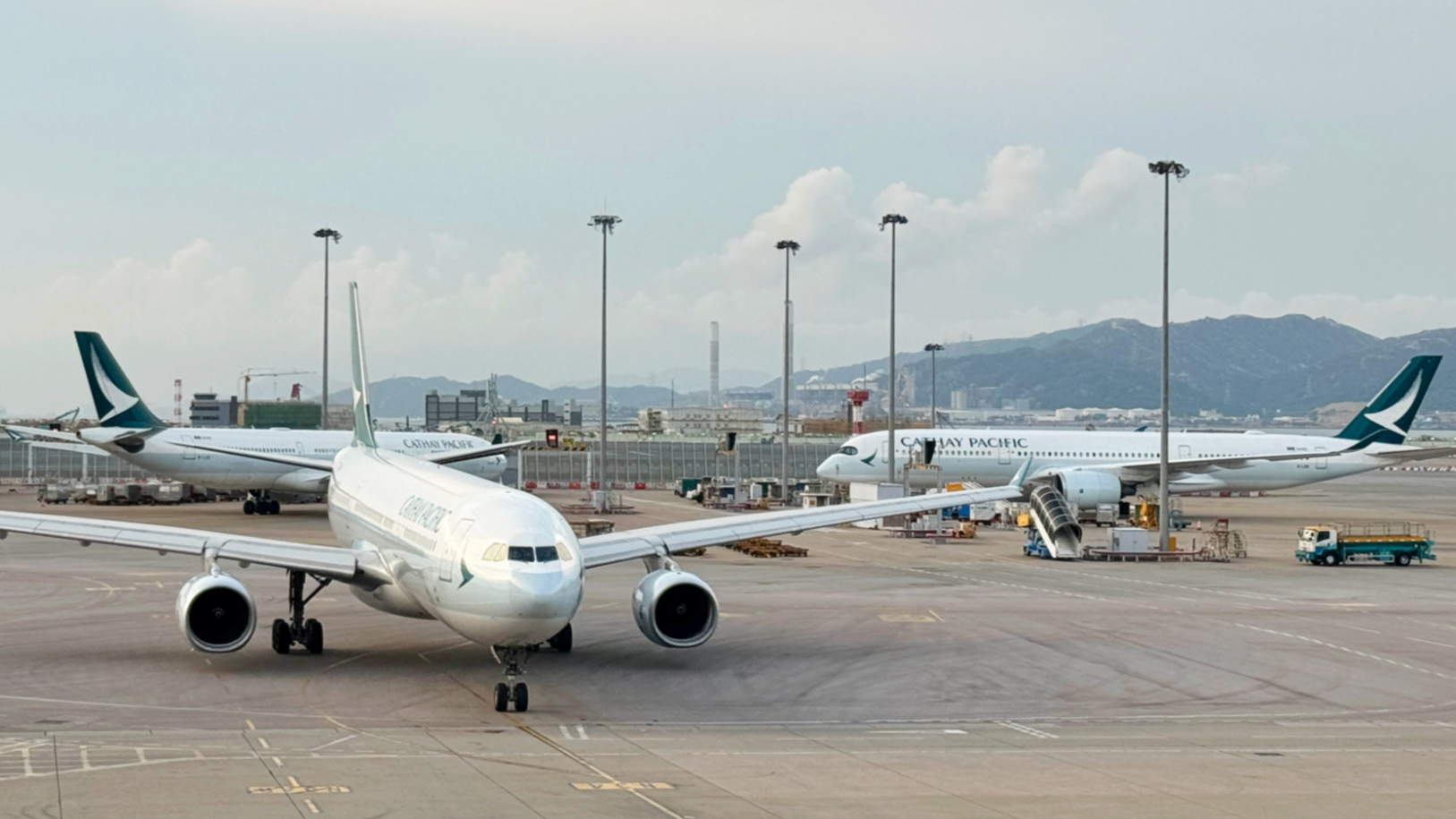
HONG KONG – A Cathay Pacific Airbus A350 engine failed in-flight earlier this month due to a damaged fuel hose, which also showed signs of a fire, Hong Kong's aviation accident investigators said on Thursday.
The Zurich-bound passenger flight CX383 had to return to the Hong Kong International Airport just over an hour after take-off on Sept 2 following an engine fire warning, prompting the Hong Kong flag carrier to inspect all its 48 A350 jets later.
During its investigation, the Air Accident Investigation Authority (AAIA) of Hong Kong found a ruptured fuel hose in the second engine of the A350-1041 jet.
READ MORE: Cathay finds 15 A350s need engine parts replaced
“Black soot was observed on the aft section of the core engine, indicating signs of a fire. Burn marks were also noted on the underside of the two thrust reverser cowls,” the agency said in its preliminary report.
Five additional secondary fuel hoses were found to have either frayed metal braids or collapsed structures inside the hose, it added.
“Coupled with other contributing factors, such as the presence of oxygen and an ignition (heat) source, this could result in a fire that could spread to the surrounding area. If not promptly detected and addressed, this situation, along with further failures, could escalate into a more serious engine fire, potentially causing extensive damage to the aircraft,” reads the report.
Using the investigative term "serious incident", which points to a high probability of an accident, the AAIA report said in its recommendation that the “serious incident” illustrates the potential for fuel leaks through the ruptured secondary fuel manifold hose, “which could result in engine fires”.
The AAIA also recommended the European Union Aviation Safety Agency (EASA) to ask Rolls-Royce Deutschland to develop continuing airworthiness information, including inspection requirements of the secondary fuel manifold hoses of its engines to ensure their serviceability.
ALSO READ: Cathay’s A350 fleet to resume full operation by Sept 7
A spokesperson for the AAIA, an independent investigation authority formed under the Transport and Logistics Bureau, said the preliminary report had been published to provide factual information established in the investigation's early-evidence collection phase to both the aviation industry and the general public in a timely manner.
“The investigation team is conducting a detailed analysis of the data and information collected in order to determine the circumstances and causes of this occurrence with a view to preventing a recurrence in conjunction with identifying areas for further investigation or lines of inquiry to follow up,” the spokesperson said in a statement.
Following the Sept 2 engine fire on the passenger aircraft, Cathay thoroughly inspected all of its A350 jets, identifying 15 aircraft with engine components requiring replacement. The inspections and repairs to the Rolls-Royce engines that power its fleet of 48 A350 jets led the airline to cancel 45 return flights on mostly regional Asian routes that week.
The airline apologized to the customers whose travel plans were affected by the incident. “This was a significant situation for Cathay to manage as the engine component failure was the first of its type to occur on any A350 aircraft anywhere in the world,” Cathay's Chief Operations and Service Delivery Officer Alex McGowan said on Sept 4.
READ MORE: Cathay meets airworthiness directive, says Civil aviation authority
On Sept 6, Hong Kong’s Civil Aviation Department affirmed that Cathay Pacific fulfilled an emergency airworthiness directive, issued by the EASA that day, requiring inspections of Airbus A350 aircraft powered by the specified engine model.
The EASA directive was applicable to all airlines that operate A350 aircraft powered by the specified engines worldwide following the Cathay Airbus engine component failure.


